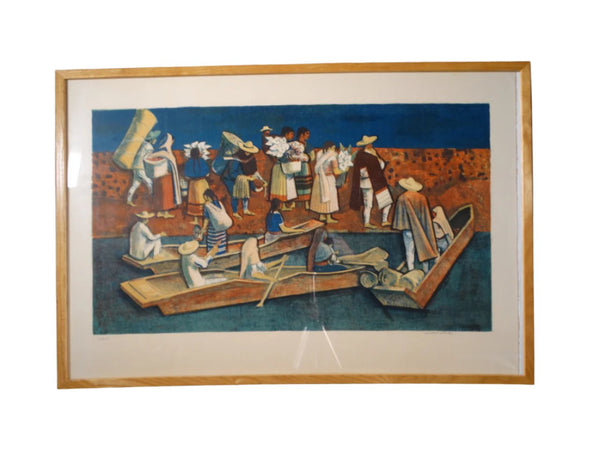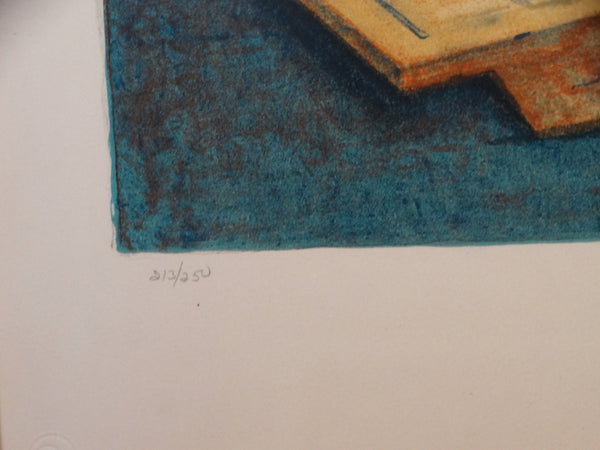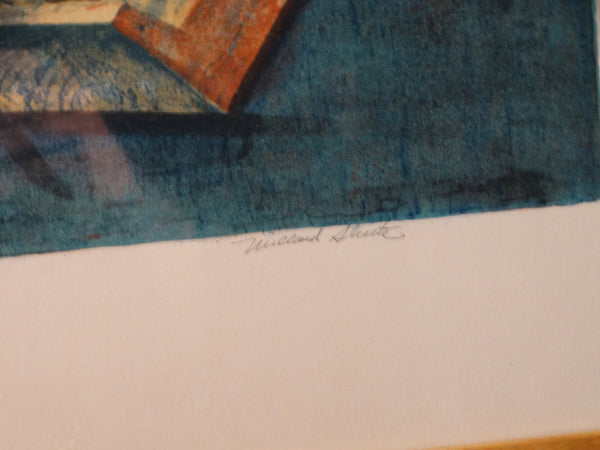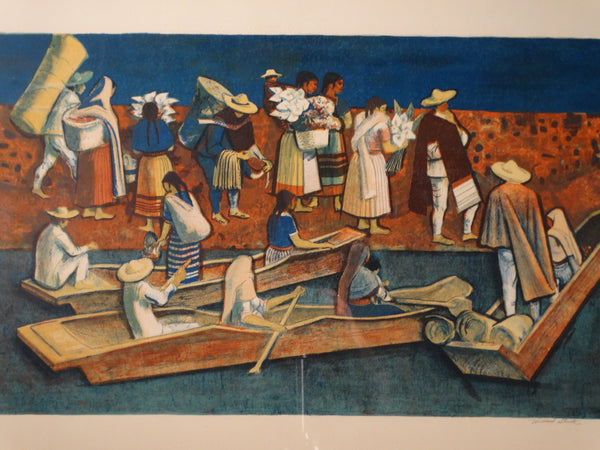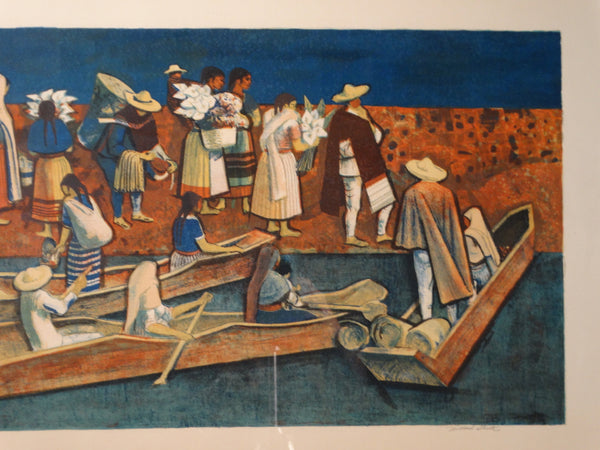Millard Sheets Lithograph Mexican Travelers AP1538
A beautifully rendered scene by one of the great California masters. Signed and numbered 213/250.
Art measures 24" x 35", frame 25 1/2" x 37 1/4".
Born in Pomona, California and living much of his life in Southern California, Millard Sheets earned a reputation as one of the foremost watercolorists of his era. His subjects were landscapes and scenes of urban and rural people in humble living circumstances. He said that he was willing to be called a regionalist only if you accepted the idea that his work embraced a large region.
It is said that of all the Depression-era artists, he was the most representative of the California School*, part of the American Scene* movement. According to Susan Anderson in her essay, 'California Holiday', for American Art Review, June 2002, he was a "colorful, larger-than-life character possessing equal measures of talent and ambition" and he "set the direction for the school."
In addition to having painting talents, he was an architect, mural designer, and maker of tapestries and mosaics*. Projects included the mosaic dome and chapel at the National Shrine in Washington DC, the mosaic library tower at the University of Notre Dame, the mosaic facade of the Detroit Public Library, mural at the Rainbow Tower of the Hilton Hotel in Honolulu, and murals for the Los Angeles City Hall.
He studied at the Chouinard Art Institute in Los Angeles with Clarence Hinkle and F. Tolles Chamberlin. After graduation in 1929, he taught watercolor classes at Chouinard and his use of this medium encouraged many others to follow suit including Phil Dike, Lee Blair, Hardie Gramatky, Barse Miller, Phil Paradise and Paul Sample. They had much camaraderie amongst themselves and joined the California Water Color Society*, stirring state-wide interest and ultimately a national revival of interest in that medium. Watercolor with its quick drying, fast moving qualities seemed to reflect the mood of the country of going fast and being flexible.
Later, beginning 1938 Sheets chaired both the art departments at Scripps College in Claremont and was director of the Claremont Graduate School. Excepting military service during World War II, he remained at Claremont until 1954 to 1960 when he headed the Otis Art Institute in Los Angeles. After that time period, he had a studio for architectural design, mosaics and murals, and for the next twenty years executed over 100 buildings throughout the United States, mostly with mosaics and murals.
His national recognition began in 1930 when his work was selected for inclusion in the Carnegie Institute's International Exhibition of Paintings, the most important United States exhibition at that time. In World War II, he was an artist reporter in Burma and India, and he designed Luke Air Force base in Phoenix, Arizona. He was a member of the National Academy of Design*.
Other exhibition venues included the Arizona State Fair, 1928-1930; San Antonio Art Association, 1929; Corcoran Galleries Biennials, 1932 to 1949; Kansas City Art Institute; Nebraska Art Association in Lincoln; and the Pennsylvania Academy of Fine Arts*, 1929 to 1940.
His paintings are in the Metropolitan Museum of Art and the Whitney Museum in New York, the Chicago Art Institute, the National Gallery in Washington D.C.; the DeYoung Museum in San Francisco; and the Los Angeles County Museum.
Memberships included the West Coast Watercolor Society, California Watercolor Society, California Art Club*, and the Bohemian Club*.
Sources:
Susan Anderson, "California Holiday", American Art Review, June 2002
Peter Falk, Who Was Who in American Art


